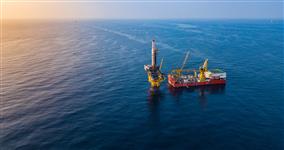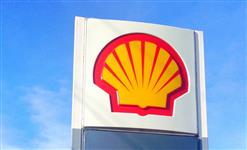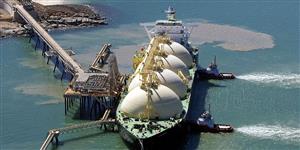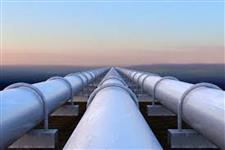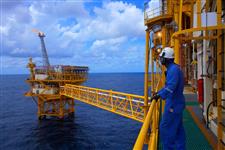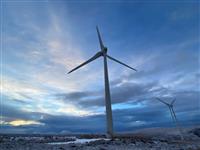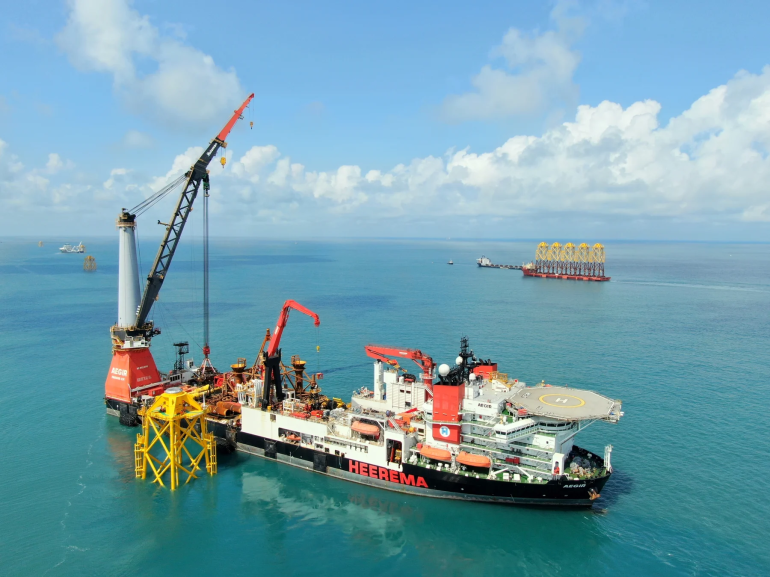
Heerema Marine Contractors Gears Up for Petronas' Kasawari Gas Field Development
Posted 14/08/2023 11:22
Heerema Marine Contractors, an offshore contractor based in the Netherlands, is preparing for the installation of key structures for Petronas' colossal Kasawari gas field development offshore Malaysia. The upcoming operation will involve the utilization of the heavy-lift crane vessel Aegir, alongside the support of the Panama-flagged floatover barge H-851. These vessels will work in tandem to install the central processing platform (CPP) and bridges, which have been fabricated by Malaysia Marine & Heavy Engineering (MMHE).
The intricate offshore transportation and installation (T&I) work is being facilitated by a fleet of vessels, including the Netherlands-flagged super large anchor handling tug ALP Striker, the very large anchor-handling tug supply vessel GH Endeavour, the large AHTS vessel Posh Perseverance, and the MV Hana.
The H-851, ALP Striker, and Posh Perseverance have recently begun transporting the CPP from MMHE's fabrication yard at Pasir Gudang in Peninsular Malaysia to Miri, Sarawak, in preparation for its installation off the coast of that state.
In 2019, MMHE secured the engineering, procurement, construction, installation, and commissioning (EPCIC) contract for Petronas' Kasawari sour gas project off the coast of Sarawak, East Malaysia. The ambitious scope of work includes the CPP weighing 47,000 tonnes, an 8,600-tonne wellhead platform, and two bridges connecting the CPP to the wellhead platform and flare structure.
Furthermore, MMHE's responsibilities encompass the transportation and installation of an 85-kilometer pipeline that links the CPP to the existing E11R-A platform.
The Kasawari gas will be utilized as feedstock at the Petronas LNG Complex located in Bintulu, Sarawak.
Petronas Carigali's Kasawari field is a significant non-associated gas project in Malaysia, characterized by its 30% to 40% carbon dioxide content. To harness the reserves with higher CO2 content, a second development phase involving carbon capture and storage (CCS) is underway.
Last year, Petronas Carigali made the final investment decision on the Kasawari CCS project (Kasawari phase 2). This project aims to reduce carbon dioxide emissions from flaring by 3.3 million tonnes of CO2 equivalent annually. It is anticipated to become one of the largest offshore CCS initiatives globally.
The detailed engineering for the Kasawari CCS project is currently being performed by MMHE and its engineering partner Perunding Ranhill Worley.
Kasawari phase two will see the installation of a fixed CCS platform, including a 15,000-tonne eight-legged jacket and 14,000-tonne topsides, in a water depth of 108 meters. The structure will be bridge-linked to the main CPP, with a new 138-kilometer, 16-inch subsea pipeline designed to transport compressed CO2 for injection into a depleted reservoir at the M1 field.
Throughout the project's lifespan, approximately 71 to 76 million tonnes of CO2 from the Kasawari CCS initiative will be reinjected into the M1 field.


